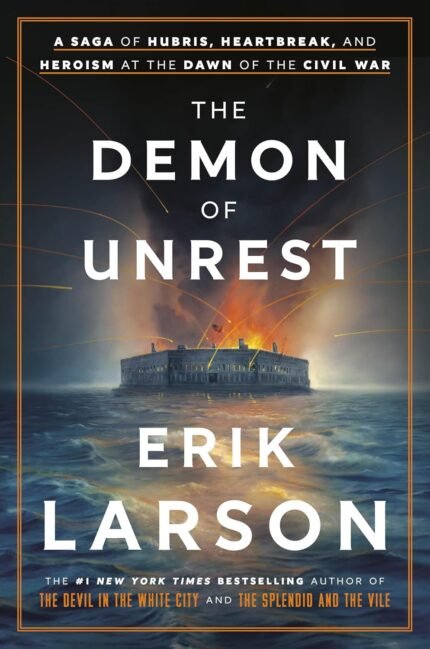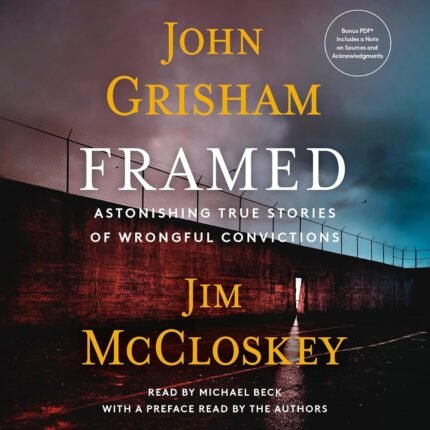Price: $16.99 - $9.04
(as of May 03, 2025 01:09:28 UTC – Details)
“With advice on not just getting along, but truly reconnecting with the great outdoors, Dave Canterbury’s treasure trove of world-renowned wisdom and experience comes to life within these pages.” —Bustle
A New York Times Bestseller in Sports and Travel!
The ultimate resource for experiencing the backcountry!
Written by survivalist expert Dave Canterbury, Bushcraft 101 gets you ready for your next backcountry trip with advice on making the most of your time outdoors. Based on the 5Cs of Survivability–cutting tools, covering, combustion devices, containers, and cordages–this valuable guide offers only the most important survival skills to help you craft resources from your surroundings and truly experience the beauty and thrill of the wilderness. Inside, you’ll also discover detailed information on:
Choosing the right items for your kit.
Manufacturing needed tools and supplies.
Collecting and cooking food.
Protecting yourself from the elements.
With Canterbury’s guidance, you’ll not only prepare yourself for any climate and situation, you’ll also learn how to use the art of bushcraft to reconnect with nature in ways you’ve never imagined.
From the Publisher


A Field Guide to the Art of Wilderness Survival
By Dave Canterbury
The ultimate resource for experiencing the backcountry!
Written by survivalist expert Dave Canterbury, Bushcraft 101 gets you ready for your next backcountry trip with advice on making the most of your time outdoors. Based on the 5Cs of Survivability–cutting tools, covering, combustion devices, containers, and cordages–this valuable guide offers only the most important survival skills to help you craft resources from your surroundings and truly experience the beauty and thrill of the wilderness. Inside, you’ll also discover detailed information on:
-Choosing the right items for your kit.
-Manufacturing needed tools and supplies.
-Collecting and cooking food.
-Protecting yourself from the elements.
With Canterbury’s guidance, you’ll not only prepare yourself for any climate and situation, you’ll also learn how to use the art of bushcraft to reconnect with nature in ways you’ve never imagined.


Dave Canterbury
Dave Canterbury is the co-owner and supervising instructor at the Pathfinder School, which USA TODAY named one of the Top 12 Survival Schools in the United States. He has been published in Self Reliance Illustrated, New Pioneer, American Frontiersman, and Trapper’s World. Dave is the author of Bushcraft 101, Advanced Bushcraft, and The Bushcraft Guide to Trapping, Gathering, and Cooking in the Wild.
Publisher : Adams Media; 1st edition (September 1, 2014)
Language : English
Paperback : 256 pages
ISBN-10 : 1440579776
ISBN-13 : 978-1440579776
Item Weight : 10.5 ounces
Dimensions : 0.79 x 5.31 x 8.5 inches
Customers say
Customers find this bushcraft guide educational and well-written, with simple language that makes it easy to understand. The book serves as a comprehensive introduction to survival techniques, making it particularly suitable for beginners and outdoor enthusiasts. While some customers appreciate the illustrations, others find them inadequate, and the book offers good value for money. Customers consider it a perfect gift for outdoor personnel.
















Lexy Smith –
The Only Book That Matters if Society Collapses
I bought this book for my fiancée, an Eagle Scout who already knows how to survive in the wilderness using nothing but a shoelace and sheer determination. I thought, Oh, this will be a nice little refresher for him! No. This book is now his Bible. I have seen him reading it with the kind of reverence usually reserved for ancient scrolls or secret government documents. He refers to it in casual conversation. “Well, actually, the best way to build a debris shelter is—” No one asked, but I’m glad you know.I, personally, know nothing about bushcrafting. My survival strategy involves screaming and hoping someone else handles it. But thanks to this book, I now rest easy knowing that if the apocalypse happens, my fiancée will be ready. I, on the other hand, will probably be eaten by a raccoon within the first 24 hours. But at least he will thrive, roasting acorns over a fire he made with nothing but a stick and a prayer.If you have a partner who enjoys being prepared for a world without grocery stores, Wi-Fi, or the basic comforts of civilization, this book is essential. Buy it. And if you hear someone whispering “always be prepared” in their sleep, don’t be alarmed—it’s just the book working its magic.
Clifford Johanson –
Great book
Great book. Covers the important details of skills and wildlife knowledge. Can even take it with you while outdoors. Researched well, takes from the knowledge brought forth by early age woodsmen, in addition to modern practices. An essential book for my library.
Addi –
amazing
exactly like the one on TikTok shop just felt safe for buying on Amazon a ton of cool crafts and ideas
Alex –
A Few Missing Tips & Tricks
This book was pretty good & it probably would have been excellent if it hadn’t been shortened the way it was. I’m relatively familiar with Dave’s work (at least on Youtube & from some different articles), and I could see where it was cut short in places.A great example of this was when talking about using a peg & string to get a bottle/canteen out of the fire- getting it in & out was covered, but not jamming a forked stick into the ground so you can catch the bottle in that fork & pour into a cup held with your free hand. A good trick that got left out.Same with using an exercise mat & space blanket (or reflectix, which is that mylar bubble wrap that goes around the ducts in buildings, like in Dave’s video on Winterizing the Hammock) as a warming layer in a hammock. You can even lay on a blanket that’s layed out in a diamond style, fold the corner over your feet, fold one side over that, fold the other side over that, then pull a sleeping bag over that! I remember hearing about that & I was all over the place- you can be very warm without fire with that one.Anyway, Dave’s next book should patch out the gaps in the first one (which don’t seem to be his fault). I would very much like to see a book by Dave Canterbury on “Mountain Man Bushcrafting” or “Pioneer-Era Life Skills” or something like that. I get that some things aren’t distinctly American, but a book that mentions those skills in detail with the alternative styles added in would be great. As an example: “They used to do [whatever] in the pioneer days, but you can also use [whatever trick from Scandinavia].” There’s plenty of opportunity to throw in that someone might not want to use modern stuff like lighters or nylon rope simply because they don’t want to be that supported (like only taking an axe & a sharpener). Or that they might want to experience what things were like in different situations, instead of just imagining & theorizing. Or that they want to prove (to themselves and/or others) that they CAN do it, too. Sometimes just describing something is the best way to put words to it.Extra Points: Dave seems to have mixed-up “Swiss” & “Swedish” on the backpack & the cookset he mentions. Not too big an issue to find either one, as a lot of people mix those two up & frequently it IS actually labeled as “Swedish.” Just figured I’d mention it, in case someone was looking & figured it wasn’t available. Don’t have either to know how they’d work, but I remember Dave taking a hose to the backpack in one of his video demonstrations- so I figure that would be a good one.Also, I figure there’s a few things that didn’t make it into this book (maybe they’ll be in the next one, or maybe Dave doesn’t even know about them). I’ll list them & give a general description of what they are, but after that someone could always do their own research:(1) Jerven Bag. Kind of like a poncho/space blanket combination that zips into a sleeping bag. It’s supposed to be very effective, versatile, lightweight, and small when compacted (like being able to be stuffed into canteen pouch with stakes & a bungee cord). Very expensive, but also supposed to last for decades if you don”t light it on fire. There’s different variations, but it seems the first one is the smallest.(2) Mountain Serape. An insulated poncho liner that zips into a sleeping bag & sleeveless coat. Is somewhere around 2.5 pounds & rolls into its own hood. A trick with any sleeping bag that has the extra length to do it is to scrunch it up so that there’s more insulation under you & it doesn’t compress as much. Nearly as expensive as the Jerven Bag (either one is about $180).(3) Russian Army Surplus Sleeping Bag. Similar to the US modular one, but it can be completely unzipped- this allows you to jump right out of it if the need arises (might be better to leave your feet sticking out for this). It’s also got a waterproof & durable outer layer that makes it so that you don’t necessarily need a bivy bag. You could bring one, but NEEDING one is a potential problem- since if you don’t have it, you don’t have it.(4) Plash Palatka. Russian canvas poncho. A bit more versatile as a poncho or as a shelter option, since it can be worn open or closed & can be safely used next to a fire. Can be hard to find, but you can look up “Russian Tent Triangle” on ASMC.de & there’s different sizes. There’s also sovietarmystuff.com & eBay.(5) Wells-Lamont work gloves. Work gloves WERE mentioned, but I didn’t see that brand specifically mentioned & it can be hard to find work gloves with good dexterity. You could try looking up “cattleman’s gloves” for that general idea. Might be good to have some of the cut-proof variety, but haven’t seen them used for much outdoor activity. Maybe the kinds chefs use in the kitchen would be a good idea, at least for those same uses.(6) Leatherman Sidekick. Just a small, inexpensive multi-tool with a straight edge knife & a saw. Doesn’t have an awl, but maybe you could sharpen the flathead screwdriver & drill a hole in it. Price varies around $30-$40.(7) Cedar Oil. Supposedly keeps scorpions away. Might be good for spiders & ants, too.Well, that’s a few more than I originally intended, but at least the shelter stuff is something to look into.
Nate beck –
Bush book. Read words.
Me like book. Book good. Book teach. You learn.
buffalo1a –
This is a great book for new and experienced alike, but not an uberlight tech gear outdoors book.
Ok, here go we guys and gals by the numbers:1) What this book is not: It is not an uberlight,super modern, techie gear,hiking/camping survival book. if that is what you are looking for skip it.2) What the book is (imho): It is a rock solid foundation to get you into the outdoors and gain those skills that were never had or lost.3) Biggest detriment (imho): lack of info on edible plants a “wilderness survival” guide should have had atleast a fewvarious pics and descriptions.It’s funny someone mentioned the boyscout manual and after I read this book, I feel this is written in the style of a scout “handbook” of sorts.The book is written from a basic “start here” view. ( zero experience, just starting out) If someone were just starting out I would recommend this book, why? Simple before you start out a person should grasp the basics of the outdoors, then as their experience grows they can add or delete gear based on their style, and their experience. We all find our own style to “smooth it” in the outdoors,this book aids in that path of self discovery.This book is well written and organized based on many voices of the outdoors from the past. (Kephart,Wallace,Nessmuk,Baker,and Hillcourt to name a few but there are many more) While Dave did not reinvent the wheel, he mentions this in the dedication, but he did bring all this wealth of old knowledge back with his own ideas and thoughts.This is a great springboard in obtaining that “Doctorate in Woodsy Knowledge” While I agree with the author that there could have been more illustrations,but that does not detract from the book .(needed some edible plants,and trees and pics imho) I have already bought an extra copy to give to my grandson when we start our outdoor adventures.I read this book, reread the book,and read it again so I could give you a non “fan boy review”.I have tried to punch holes in it and while there are always little differences in opinion,I could not, this book is what it is, a solid 101 style book that anyone just starting out in the outdoors should get and read and keep reading. This is one of the few Books that I have suggested to friends just getting into the outdoors. I can’t say it enough this book is a rock solid foundation to get folks into the woods and back into touch with skills that modern people have lost. Buy this book.and btw While I like and use the sawyer filter, I did not start with one and if I did not have it then other forms of water purification would be needed.It is my opinion that one should be well versed in multiple ways of water purification,and survival knowledge to avoid the “all eggs in one basket”situation, or “Oh no! my new,shiney, lightweight, doohickey is broke, now what?”I hope this review helps.
Amazon Customer –
Take along with you while hiking,camping and your adventures.
Terry –
Ordered this book as a gift, great book, good strong knowledge of knots, fire starting, orientation and general how to’s. I recommend!
Amazon Customer –
As was written in the book also – 90% of the time you are in the bush, you are using basic skills. Master the basics and all the rest will be easy.Quality read – especially if you are starting out. Watching long videos online often with repeating topics can cost a lot of time. And still you could come short in important skills.Good book to carry – small and light. If need be.
Thijs –
Vele probleemoplossingen. In Engels geschreven.
Danielle Dubois –
L’un des meilleurs ouvrage (mais hélas en Anglais) sur la survie et l’art du bushcrafting. Extrêmement complet et bien écrit, avec des illustrations également très intéressantes ! Hautement recommandé !